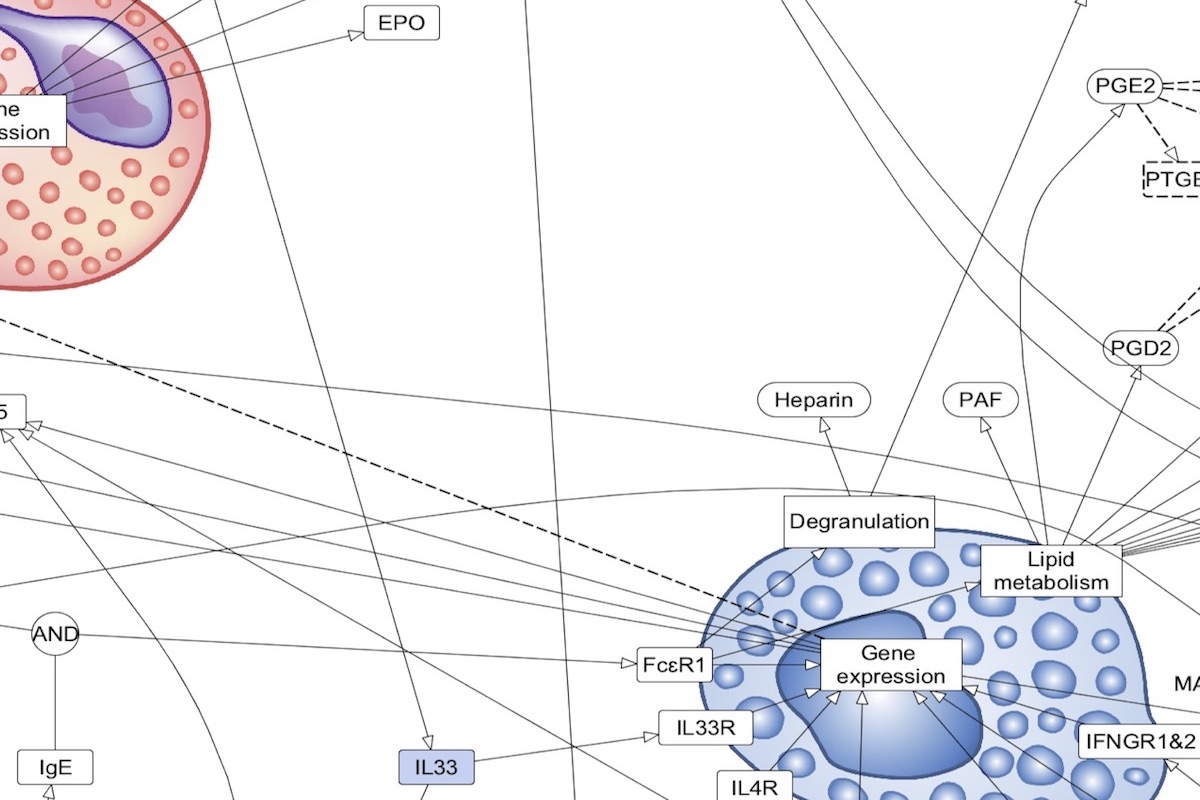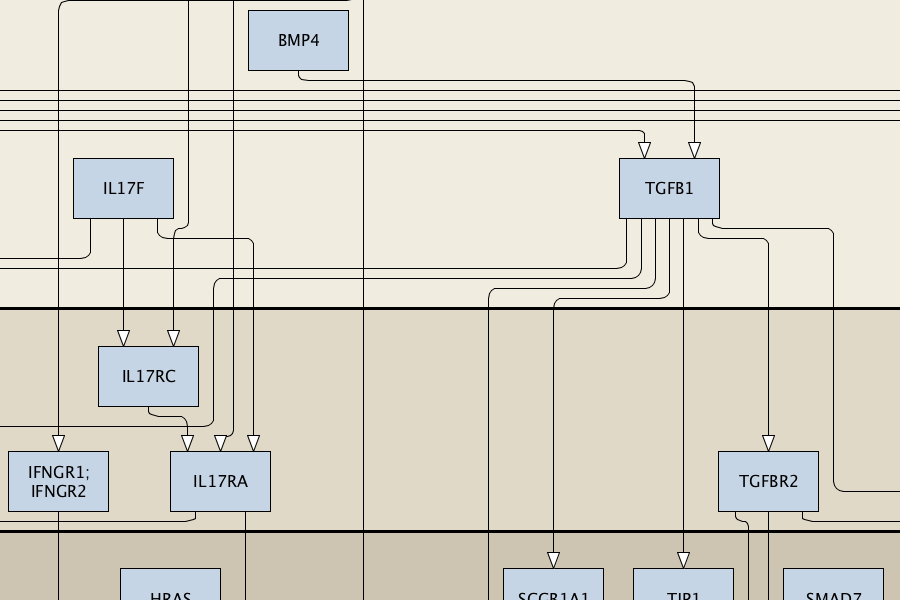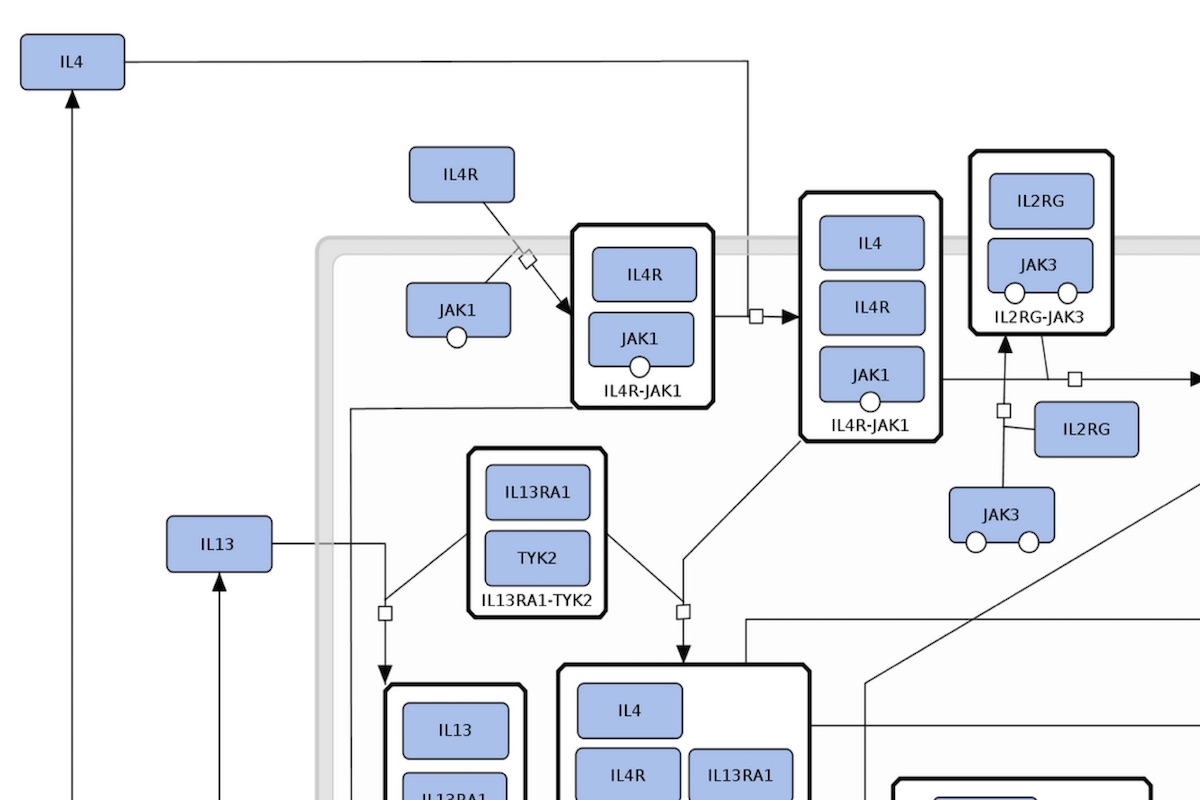Welcome to the AsthmaMap project, a community-driven effort focused on a comprehensive description of asthma mechanisms and its applications for developing models, data interpretation and hypothesis generation.


AsthmaMap architecture
The AsthmaMap includes three interconnected layers of granularity: Cellular Interactions (CI), a high-level overview; Molecular Relations (MR), the intermediate level of details; Biochemical Mechanisms (BM), the most detailed layer.
| AsthmaMap Cellular Interactions | AsthmaMap Molecular Relations | AsthmaMap Biochemical Mechanisms |
 |
 |
 |
Content: cell-to-cell communication, each receptor represents the corresponding pathway of the AF and PD layers. Format: activity flows. Purpose: disease overview, defining the content for the detailed maps, disease endotype visualisation. Compatible databeses: MetaCore Pathway Maps (overview type). |
Content: compact representation of signalling events, molecular interactions without details on processes. Format: activity flows. Purpose: ‘omics visualisation, network-enrichment analysis, interpretation and hypothesis generation, logical models. Compatible databeses: MetaCore Pathway Maps, Ingenuity Pathways Knowledge Base, KEGG Pathway Database. |
Content: comprehensive detailed maps - integrated detailed metabolic, signalling and gene regulatory pathways. Format: process descriptions. Purpose: unambiguous visualisation of molecular processes, the basis for modelling and simulation. Compatible databases: Reactome Pathway Database, PANTHER Pathways, Recon2 reconstruction of human metabolism. |
Map access
Open in MINERVA to browse the AsthmaMap Build 1.2. More information about the MINERVA platform is available in Tools.
Video tutorials are available on browsing the AsthmaMap in MINERVA and using the resource for drug target exploration and data visualisation.